1. Most Tiny Turtle Sales are Illegal
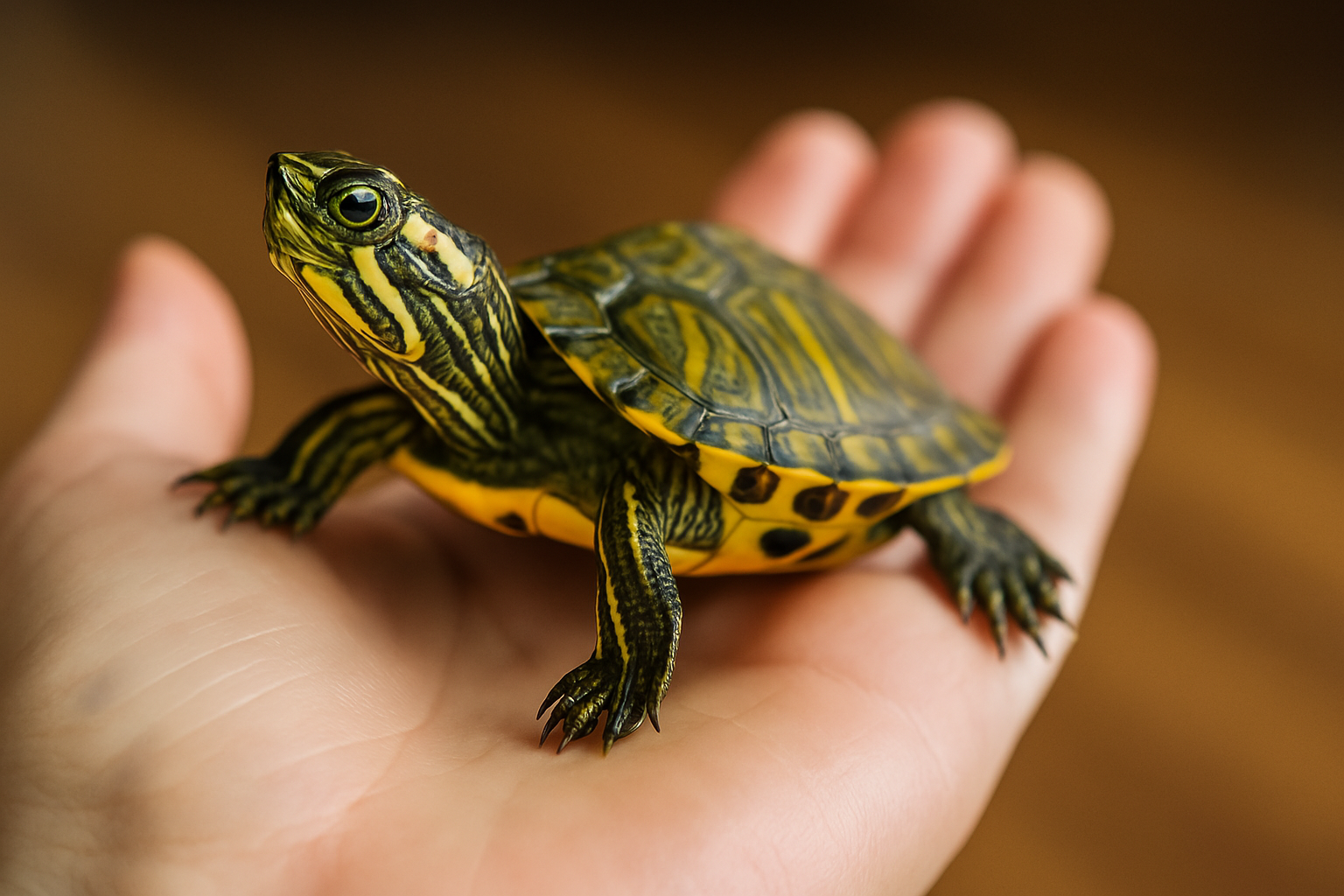
You might not know it, but the sale of turtles with shells under four inches has been banned in the U.S. since the 1970s. This federal regulation was put in place after widespread Salmonella outbreaks in children linked to small pet turtles. Despite this, illegal vendors often operate on sidewalks, at flea markets, or in pop-up shops, pushing these hatchlings as “souvenirs” or “starter pets.” If you see a tiny turtle for sale, assume the transaction is illegal. By purchasing one, you aren’t just getting a cute desk ornament; you are inheriting the health risks that the decades-old law was specifically designed to prevent, and you are supporting a pipeline of animal neglect and illegal trade. Always walk away from a vendor selling undersized reptiles, regardless of how cheaply they are priced.
2. Salmonella is Normal for All Reptiles
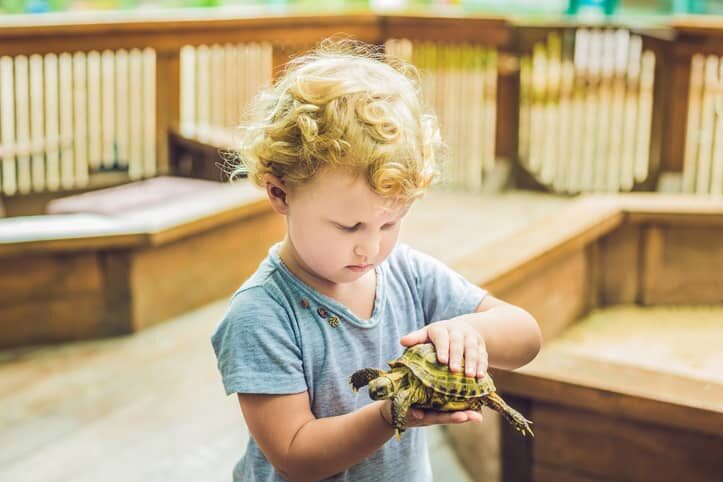
The reason for the sales ban, Salmonella, is a constant concern. Turtles, like most reptiles, can naturally carry this bacteria on their shells and skin without ever showing signs of sickness. The risk emerges when children (or adults) handle the turtle or its enclosure, then touch their faces or food. A common scenario is a child petting the shell and then snacking, which allows the bacteria to enter the digestive system. Infections can lead to severe symptoms, including fever, painful diarrhea, and significant dehydration that may require a hospital visit, especially for young children. While diligent handwashing is crucial, families with high-risk members, such as toddlers, seniors, pregnant individuals, or those with weakened immune systems, should avoid pet turtles entirely to eliminate the risk of transmission.
3. A Plastic Bowl is Not a Habitat
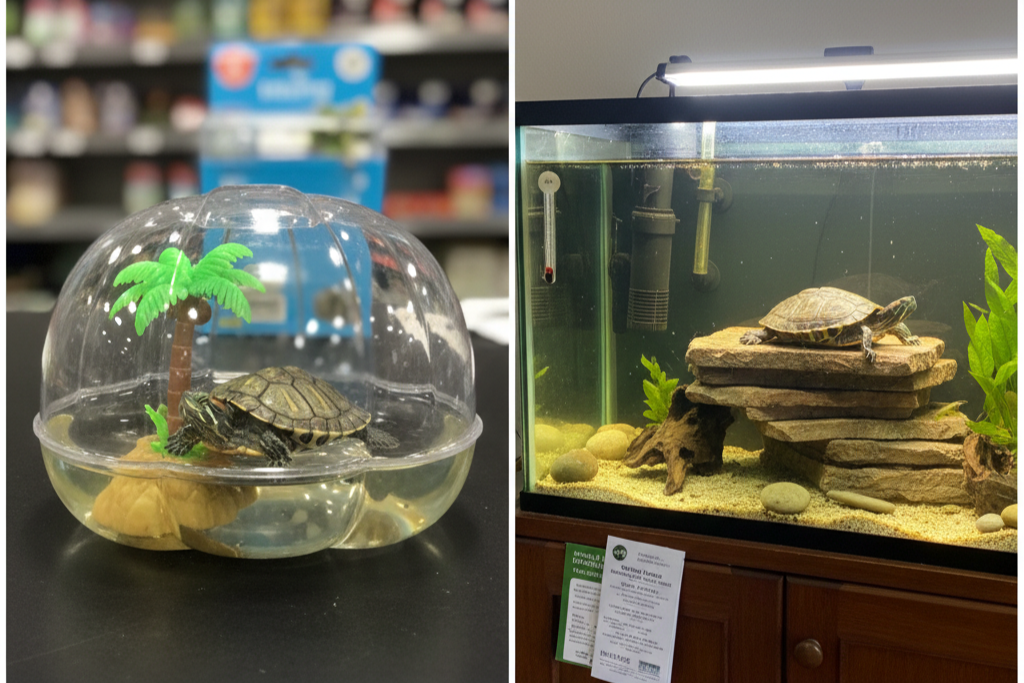
The small plastic “lagoons” with a tiny palm tree, often sold alongside hatchlings, are a dangerous piece of marketing, not a suitable home. Aquatic turtles are complex pets that need a sophisticated, filtered aquatic environment. Their habitat requires a large aquarium or tub that allows for ample swimming space, a dry platform where they can fully emerge from the water, a powerful heat lamp, and most importantly, a full-spectrum UVB light. Without this specific setup, quickly becomes a welfare crisis with extensive and costly veterinary bills, confirming that a tiny bowl is insufficient for a healthy, long-lived turtle.
4. They Live Decades and Get Much Bigger
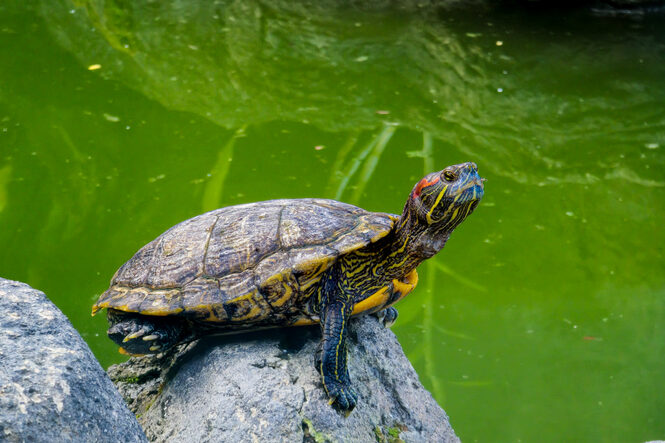
That tiny, adorable turtle hatchling will not stay small. Common pet species, particularly the Red-Eared Slider, can easily grow to a shell size of 8 to 12 inches across. This growth requires a major upgrade in living space, a single adult slider often needs a 75-gallon aquarium or larger, sometimes even a custom-built indoor pond. Furthermore, these are not short-term pets. With proper care, turtles commonly live for 20 to 40 years. This means you are not adopting a semester-long novelty but taking on a multi-decade roommate and a significant financial commitment. Families must plan for the initial expense, the cost of a much larger adult tank, and the ongoing investment in filtration, heating, and lighting for decades to come.
5. Their Diet Needs Variety, Not Just Pellets
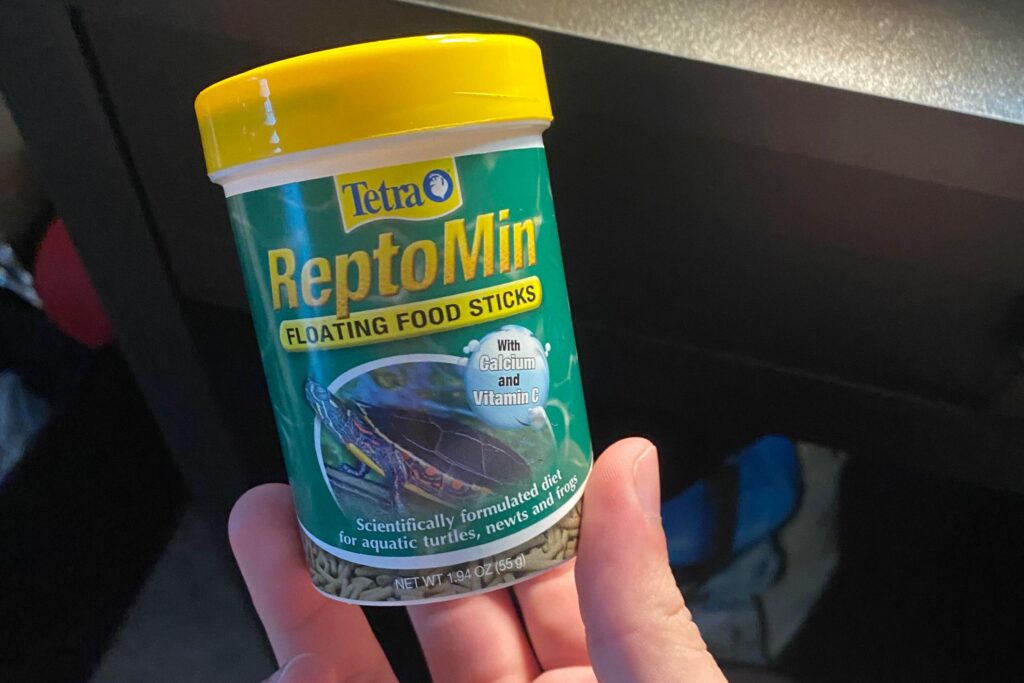
A turtle’s nutritional needs change dramatically as it matures, and simply feeding them the same floating pellets every day will eventually lead to major health issues. Hatchlings are primarily carnivorous, needing more protein to fuel their rapid growth, while adult turtles become increasingly herbivorous, requiring a significant amount of dark, leafy greens and aquatic plants. A balanced diet must include high-quality commercial pellets, fresh, dark leafy greens (like romaine or dandelion), and occasional, safe sources of protein, such as appropriately-sized insects or feeder fish. Overfeeding protein can lead to a bumpy shell deformity called pyramiding, while a lack of variety causes critical vitamin deficiencies. A diverse, balanced feeding plan, along with proper UVB exposure, is key to long-term health and prevents a “shortcut” diet from becoming a life sentence of chronic illness.
6. Releasing Them is Harmful and Often Illegal
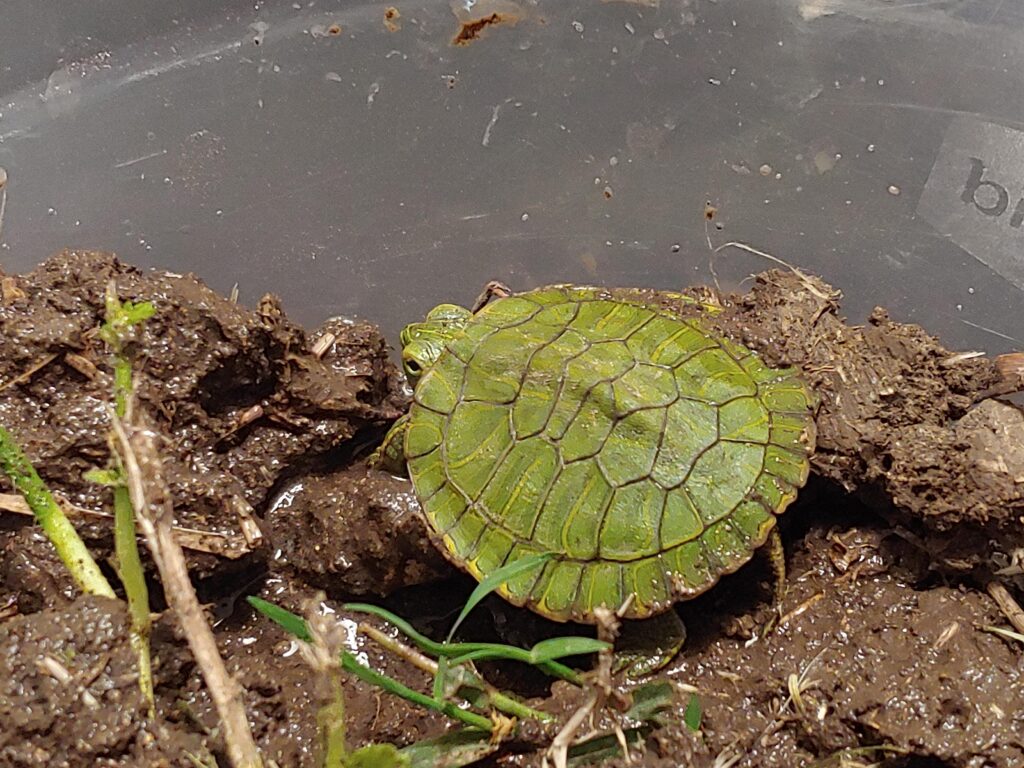
When pet turtles become too big, too costly, or too much work, some owners resort to dumping them into local ponds, lakes, or parks. This act, often done out of misguided kindness, is profoundly destructive and is illegal in many jurisdictions. Released pets, particularly the common Red-Eared Slider, become invasive species. They aggressively outcompete native turtles and other wildlife for food and prime basking spots. They also pose a significant threat by spreading diseases to the vulnerable wild populations. Consequently, park staff must spend public funds to trap and remove, or in worst-case scenarios, euthanize the released animals. Responsible ownership requires committing to finding a reputable reptile rescue or an established rehoming network, rather than turning a family problem into a community-wide ecological disaster.
7. Shelters Are Full, Adopt Before You Buy
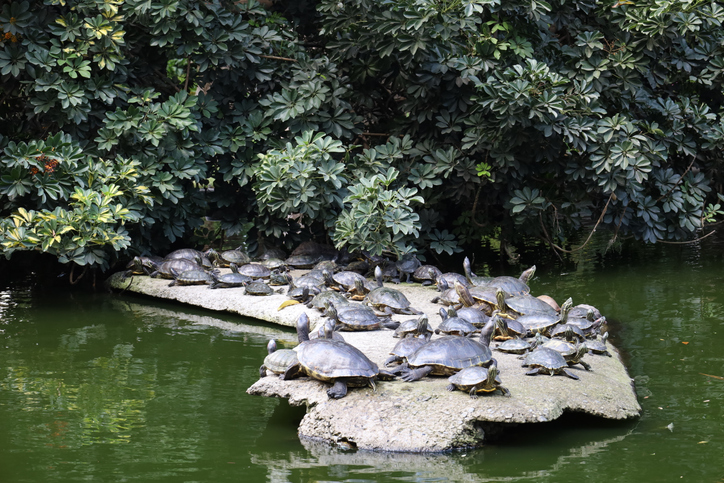
The easy and cheap availability of small, illegally sold turtles leads directly to a massive overpopulation crisis in the reptile rescue world. Animal shelters and specialized reptile rescues across the country are often overflowing with juvenile and adult turtles whose owners could no longer care for them. Choosing to adopt is the most ethical path. Many rescues offer vital husbandry coaching and honest, non-judgmental information about the true costs and required tank sizes. By adopting, you save money, bypass the shady and illegal vendor pipeline, and provide a much-needed second chance to a long-lived animal. You also directly reduce the demand that incentivizes the mass breeding and poor care of turtles sold as impulse buys.
8. Kids Need Adult-Managed Safety Systems

Simply telling a child to “wash your hands” after touching the turtle is insufficient for preventing the spread of Salmonella, a proper adult-managed safety system is necessary. The risk is not just the turtle itself but the water and all contact surfaces. Install a dedicated, pump-style soap dispenser near the enclosure, and ensure all water changes and tank maintenance are handled by an adult. Rules should be strictly enforced: no kissing or snuggling the shell, and never use the family kitchen or bathroom sink to rinse the tank or filter components. After any contact or maintenance, adults must sanitize all contact surfaces (like tabletops or bath tubs) to ensure a safe home environment where well-meant reminders are replaced by safe, consistent routines.
9. UVB Lights Need Regular Replacement
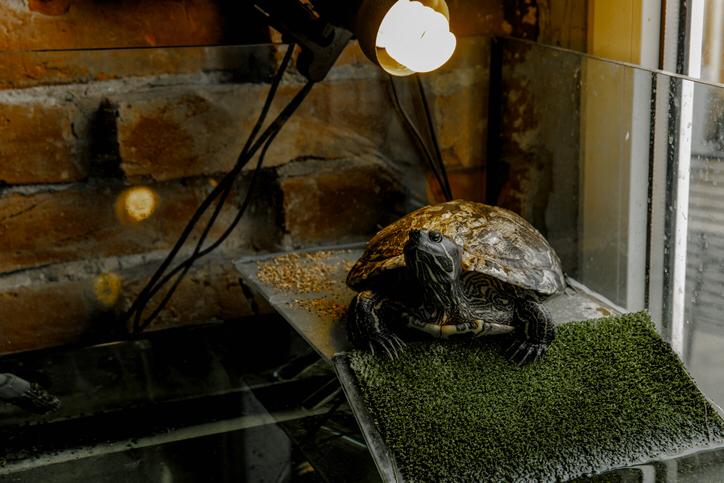
One of the most critical and often overlooked costs in turtle care is the UVB bulb. These specialized bulbs mimic the sun’s rays, which a turtle needs to synthesize Vitamin D_3 and properly metabolize calcium from their diet. Without adequate UVB, they will develop a debilitating and often fatal condition called Metabolic Bone Disease (MBD), leading to soft, deformed shells and brittle bones. Crucially, UVB bulbs lose their therapeutic output long before they stop visibly lighting up. They must be replaced on a strict schedule, typically every 6 to 12 months, according to the manufacturer’s specific guidance. Trying to “save money” by delaying replacement is a false economy; it merely pre-pays for suffering and expensive treatment from an exotic veterinarian later on.
10. You Need an Exotic Vet Before You Need One
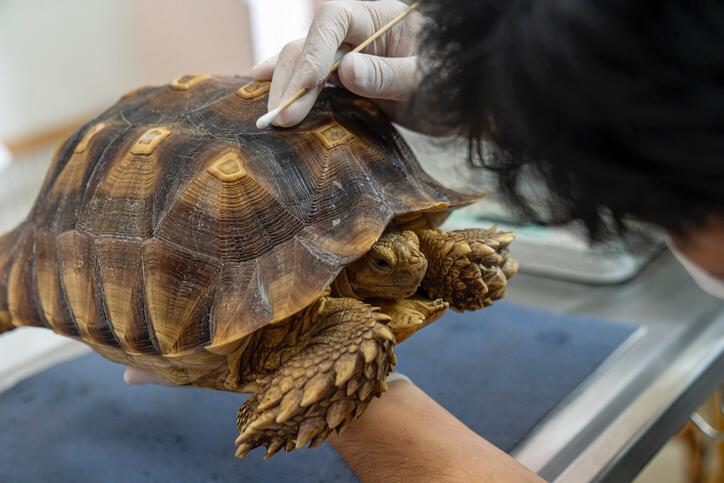
Unlike cats and dogs, not all veterinary clinics treat reptiles; turtles require a veterinarian with specialized knowledge in exotic and aquatic animal medicine. This means one of the most important tasks for a new turtle owner is to line up an experienced exotic specialist in your area before any emergency occurs. Take time to learn your turtle’s baseline behavior, appetite, and swimming habits so you can spot the subtle signs of trouble. Early warning signs can include a refusal to eat, excessive lethargy, soft spots on the shell, swollen eyes, or difficulty maintaining proper buoyancy while swimming. Early intervention saves lives and almost always costs less than waiting until the turtle is critically ill and requires emergency care or hospitalization.
11. The 4-Inch Rule is a Major Red Flag

The federal ban on selling turtles under four inches is a simple, easy-to-understand law. If a vendor attempts to brush off this rule with excuses like, “It’s only for display,” “It’s for educational purposes,” or “The law doesn’t apply to me,” that is an enormous red flag. Legitimate, responsible breeders and reputable pet stores understand the gravity of the Salmonella risk and the responsibility of selling long-lived pets; they will not sell undersized hatchlings to general households. When a vendor shows a willingness to break such a fundamental and well-known animal welfare law, you must assume that their advice on turtle husbandry and the health-testing of their animals is equally unreliable and untrustworthy.
12. If You’re Ready, Do It With Full Commitment
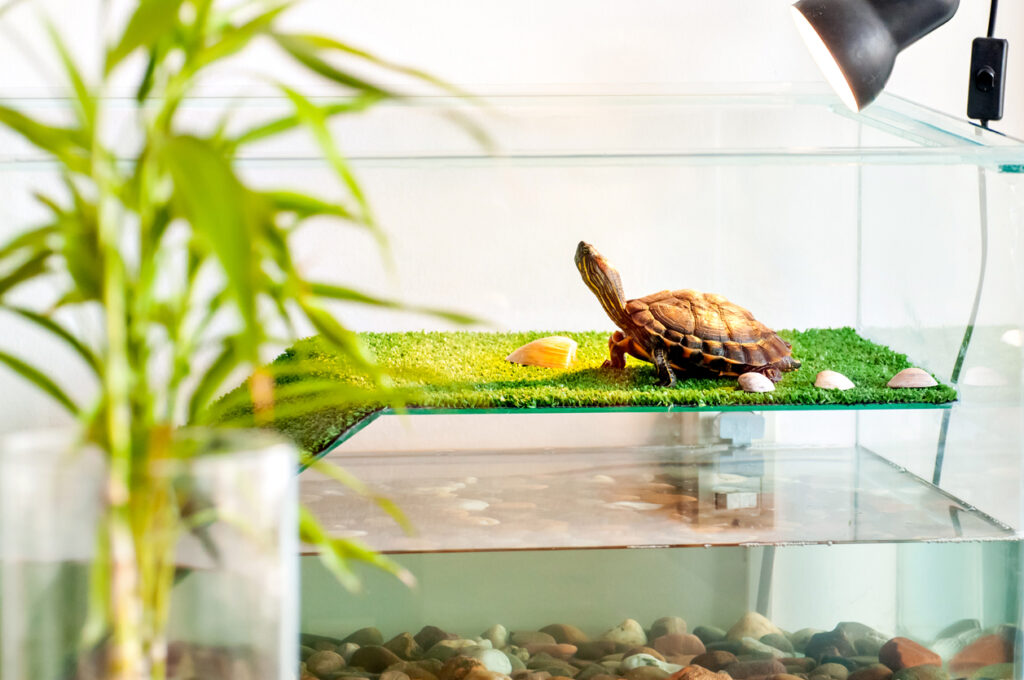
If, after considering the decades-long commitment, the health risks, and the specialized care, you are still determined to welcome a turtle into your home, the key is to do it right from the very beginning. Research species that fit your living space and level of experience. Before you even acquire the animal, you must price out the full, non-negotiable setup: a large tank, powerful external canister filter, appropriate heat and UVB lights, basking dock, water heater (if needed), and ongoing dietary costs. Finally, you must create a concrete plan to rehome the turtle through a rescue should a major life change occur. And remember, if your household includes any high-risk members (toddlers, immunocompromised people), the safest and most loving decision may be to choose a different kind of pet altogether.
The journey of turtle ownership is incredibly rewarding for those who commit to the specialized care required, but it’s a marathon, not a sprint. We hope this list empowers you to make a responsible, informed choice that protects both your family and the welfare of a truly incredible animal.
Like this story? Add your thoughts in the comments, thank you.
This story Little Turtles, Big Trouble, 12 Things Every Family Should Know was first published on Daily FETCH


